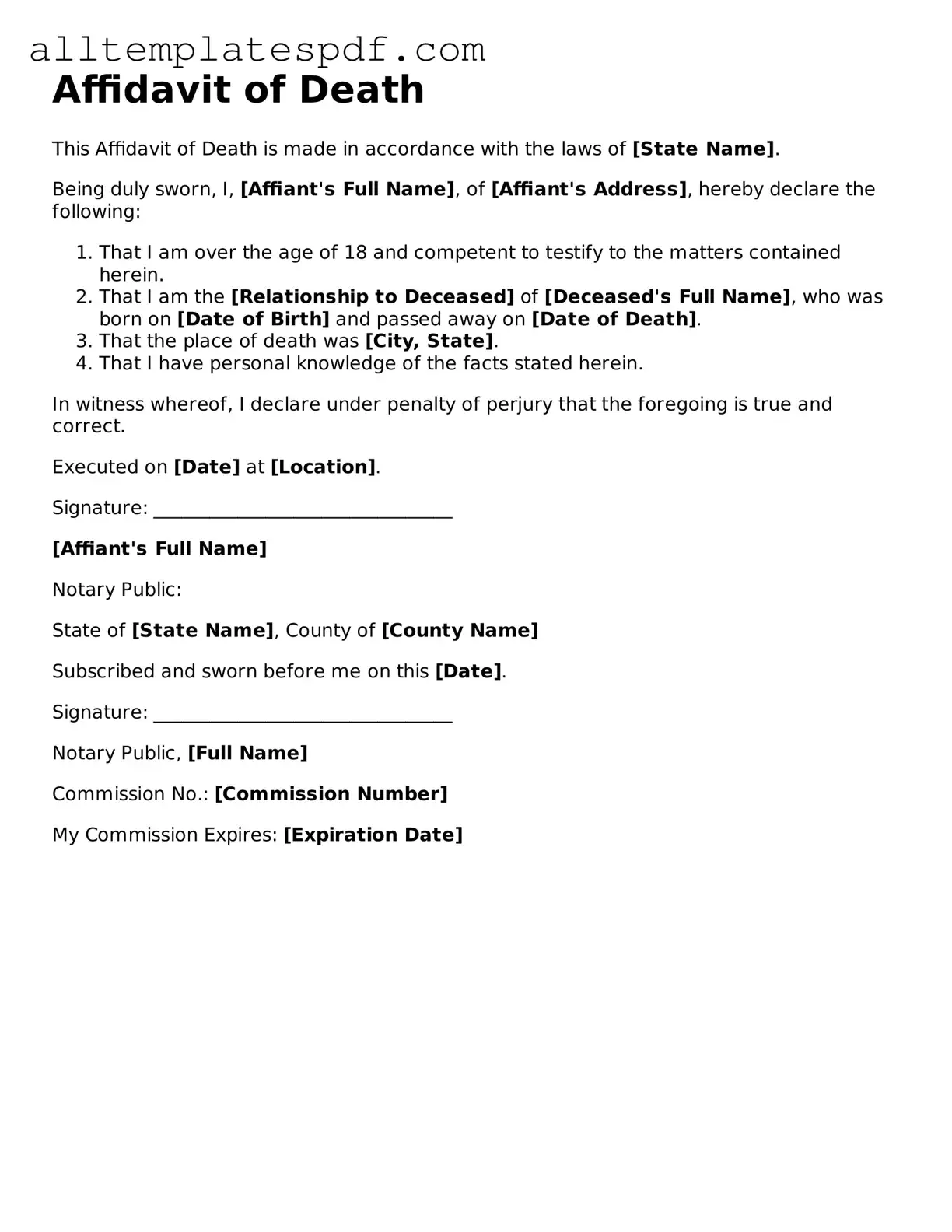Filling out the Affidavit of Death form can be a daunting task, especially during a time of grief. Many individuals make common mistakes that can lead to delays or complications in the process. One significant error is failing to provide complete information about the deceased. This includes not only their full name but also their date of birth and date of death. Omitting any of these details can result in the form being rejected.
Another frequent mistake is not signing the form in the appropriate places. Many people overlook the requirement for signatures from witnesses or notaries. Each signature serves a critical purpose in validating the affidavit. Without the necessary signatures, the form may not hold up in legal situations, leading to further complications.
Inaccurate information can also create problems. For example, individuals sometimes mistakenly list the wrong date of death or provide incorrect personal details. Such inaccuracies can lead to confusion and may necessitate additional documentation to rectify the errors. Double-checking all entries before submission is essential to avoid these issues.
Some individuals neglect to include supporting documentation, which is often required to substantiate the claims made in the affidavit. This could include a death certificate or other relevant legal documents. Without these attachments, the affidavit may be deemed incomplete, causing delays in processing.
Another common oversight is failing to follow the specific instructions provided with the form. Each jurisdiction may have unique requirements regarding how the affidavit must be completed or submitted. Ignoring these guidelines can result in unnecessary setbacks.
Individuals may also overlook the need to have the affidavit notarized. Notarization adds an additional layer of authenticity and is often required for the affidavit to be legally recognized. Skipping this step can lead to complications when attempting to use the affidavit for legal purposes.
Additionally, some people fill out the form under emotional distress, leading to rushed decisions. This haste can result in careless mistakes, such as typos or misinterpretations of questions. Taking the time to carefully review the form can help prevent these errors.
Another mistake involves not keeping copies of the completed affidavit and any submitted documents. Having a record can be invaluable for future reference or in case any questions arise regarding the affidavit’s validity.
Finally, many individuals fail to seek assistance when needed. Whether it’s from a legal professional or a trusted friend, asking for help can provide clarity and ensure that the affidavit is filled out correctly. Utilizing available resources can mitigate errors and streamline the process.
